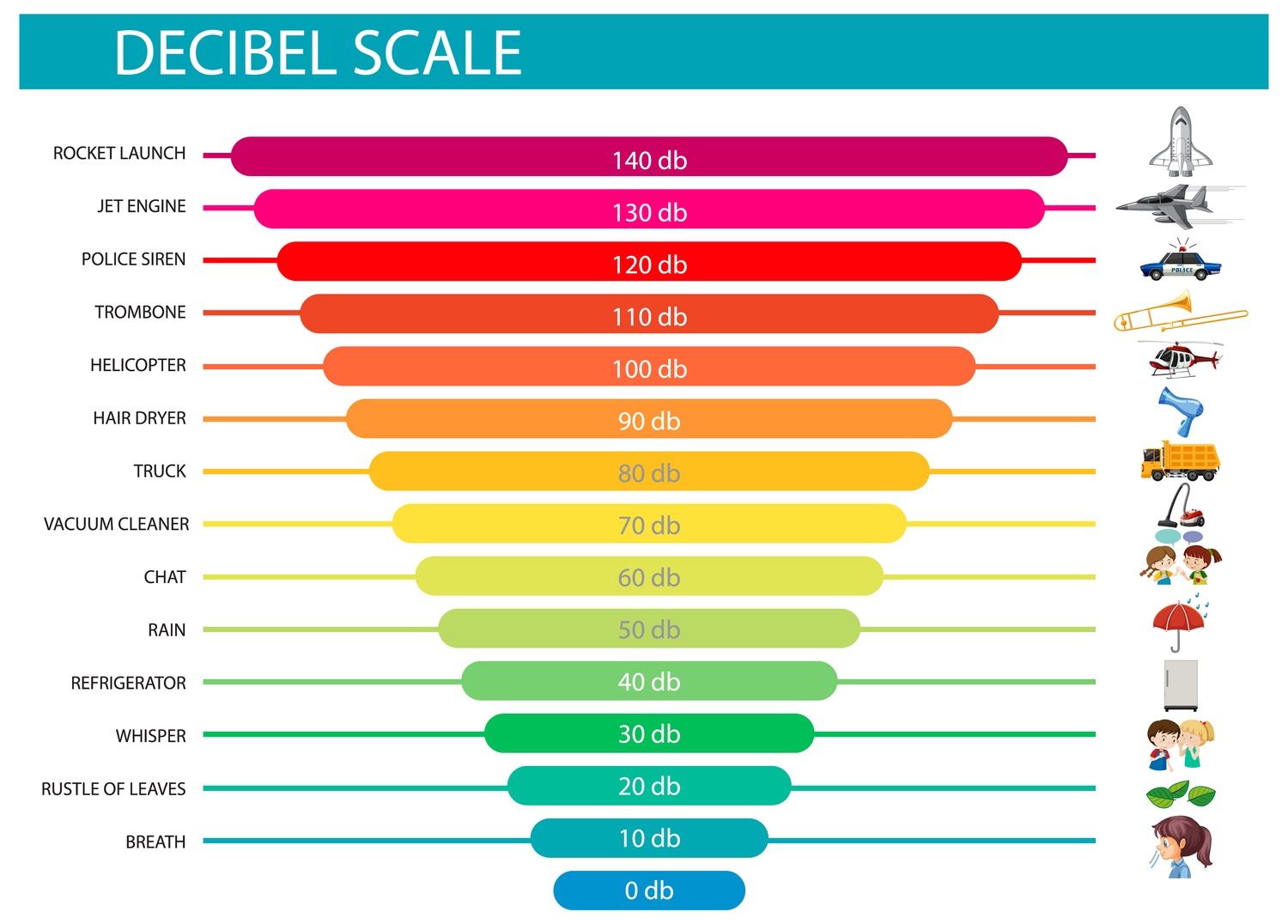How are reductions in decibels (dB) and sound levels perceived?
Understanding how sound levels change and how a reduction in decibels (dB) is perceived is crucial to assessing the effect of sound-attenuating and sound-absorbing measures. Decibels are a logarithmic unit, which means that changes in sound level are not linear. A reduction of, for example, 10 dB does not mean that the sound has been reduced by 10 percent – instead, it is perceived as the sound level being halved.
In environments such as offices, schools, restaurants, conference rooms, and homes, it is important to understand how dB changes affect the sound experience in order to create comfortable and functional acoustics. Here we go through how we perceive sound reduction, the difference between sound insulation and sound absorption, and how you can create an optimal sound environment.
How does a reduction in decibels affect the sound experience?
The effect of a reduction in sound depends on both the physical change in sound energy and how the human ear interprets the sound.
- A reduction of 3 dB means that the physical energy of the sound has been halved, but the difference is perceived as relatively small to our ears.
- A reduction of 10 dB is perceived as the sound having been halved in strength, even though the actual energy has been reduced by approximately 90 percent.
- At a 20 dB reduction, the sound is perceived as having been reduced to a quarter of its original strength.
How different types of sound are affected by dB reduction
How a sound reduction is perceived also depends on the nature of the sound.
- Steady, low-frequency sounds (such as ventilation systems or engine noise) require a greater reduction in dB to be noticeable.
- Sudden and high-frequency sounds (such as sharp voices or metallic sounds) feel more muffled even with a smaller reduction in sound.
In environments where background noise is a challenge, such as open-plan offices and restaurants, even a small dB reduction can make a big difference to sound comfort.
Sound absorption and sound insulation – what is the difference?
Creating a pleasant and effective sound environment often requires a combination of sound absorption and sound insulation.
Sound absorption
Reduces sound reflections within a room by using materials such as acoustic panels, carpets, and curtains. These help to reduce reverberation and create more pleasant acoustics.
Sound insulation
Focuses on blocking sound from being transmitted between different rooms or from external noise sources. High-density materials are used here, such as soundproof doors, windows, walls, and floors.
Examples of how sound insulation and sound absorption are used together
- In office environments, sound-absorbing screens and furniture with textiles are used to reduce echo and background noise. At the same time, soundproof doors and windows are installed to prevent sound from entering from outside.
- In restaurants, acoustic panels and sound-absorbing ceilings reduce noise levels, while heavy curtains and sound-absorbing flooring materials contribute to better sound comfort.
- In recording studios and home theaters, both sound insulation and sound absorption are used to block outside noise and improve sound quality in the room.
The environment and the room's impact on the sound experience
The extent to which a dB reduction affects the sound experience also depends on the size and acoustic properties of the room.
- In large, open spaces such as conference rooms or restaurants, a relatively small reduction in sound level can make a big difference. Here, reduced reflections from walls and ceilings can contribute to a more pleasant atmosphere.
- In small rooms with hard surfaces, such as kitchens or bathrooms, the sound level can still be high despite dB reduction. This is because the sound is reflected between surfaces and creates a long reverberation.
How do you adapt sound absorption to the room?
To handle different types of spaces, the right combination of sound-absorbing and sound-insulating measures is required.
- Acoustic ceilings and wall panels reduce sound reflections in larger rooms with a lot of reverberation.
- Sound-absorbing furniture and textiles improve the sound environment in offices and homes.
- Heavy curtains and carpets dampen sound reflections in smaller rooms with hard surfaces.
By adapting the sound measures to the characteristics of the room, you can create a more pleasant and comfortable sound environment.
How to create an optimal sound environment
To effectively reduce noise levels and create a pleasant sound environment, measures need to be adapted to the specific needs of the room.
Do you want to reduce reverberation and improve speech intelligibility?
Use sound absorbers in strategic locations, such as ceilings and walls.
Do you need to protect yourself from external noise?
Invest in sound-insulating doors, windows, and wall materials.
Do you work in an environment with high background noise?
Combine sound-absorbing screens and acoustic solutions to create a better working environment.
By using a balanced combination of sound insulation and sound absorption, you can create an optimal sound environment tailored to your needs.
Understand and control sound levels effectively
Understanding how sound reduction in dB is perceived is key to creating a comfortable and functional sound environment. Key insights include:
The sound experience changes logarithmically
A reduction of 10 dB is perceived as a halving of the sound.
Different sounds require different measures
Low-frequency sounds are more difficult to attenuate than high-frequency sounds.
Sound absorption and sound insulation complement each other
For best results, both methods should be used together.
The room's acoustics affect the sound experience
Adapt sound measures to the size and materials of the room.






